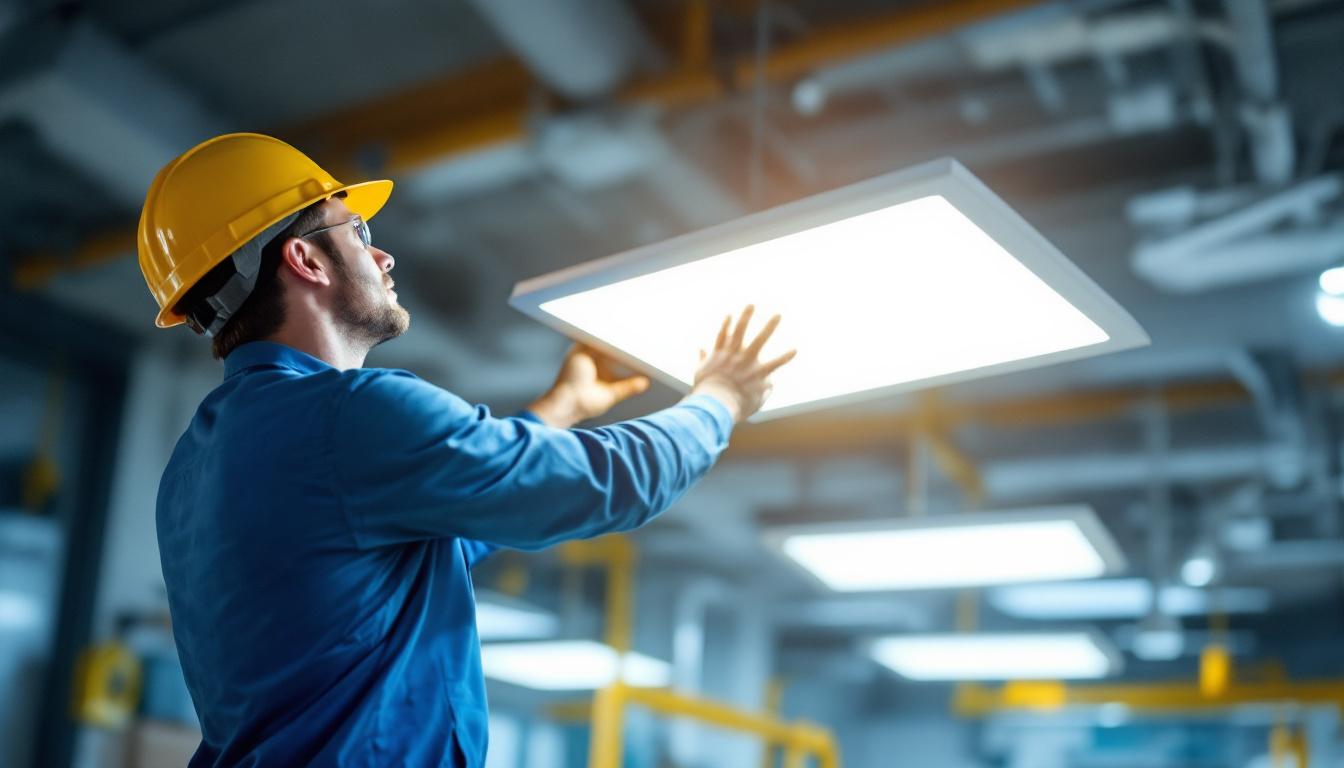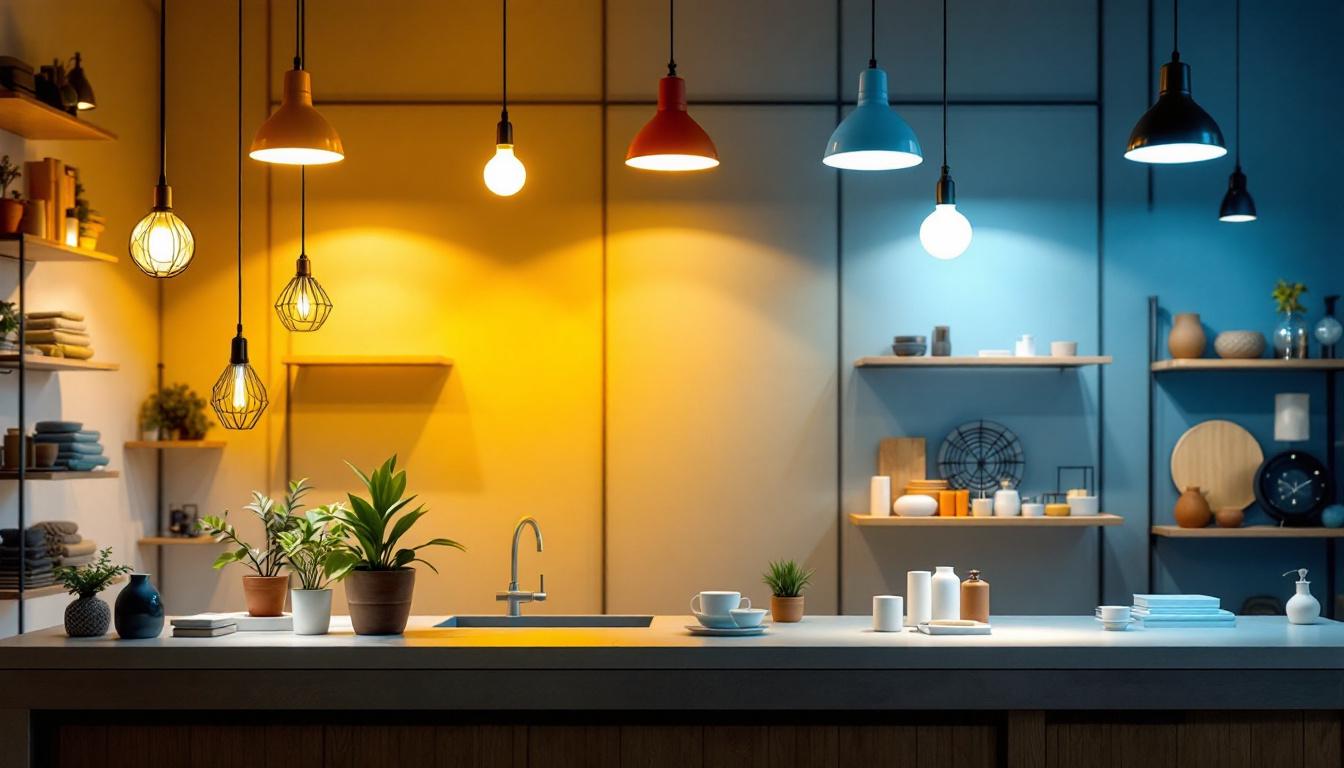
Flat panel lighting has become increasingly popular in modern design, offering sleek aesthetics and energy efficiency. However, lighting contractors must navigate various challenges to ensure successful installations. This article explores common issues faced in flat panel lighting projects and provides practical solutions to help contractors avoid pitfalls.
Flat panel lights are thin, versatile fixtures that can be installed in various settings, from commercial spaces to residential homes. Their low profile allows for seamless integration into ceilings, walls, and even furniture. The technology behind these lights typically involves LED components, which contribute to their energy efficiency and longevity. Moreover, the minimalist design of flat panel lighting not only saves space but also complements modern architectural styles, making them a popular choice for contemporary interiors.
There are several types of flat panel lights available, each designed for specific applications. Contractors should familiarize themselves with these options to better serve their clients. Common types include:
Flat panel lighting offers numerous advantages that can appeal to clients. These benefits include:
Additionally, flat panel lighting can be customized to meet specific needs, such as color-changing options for mood lighting or dimmable features to create the perfect ambiance for any occasion. This adaptability makes them an excellent choice for multi-functional spaces, where the lighting requirements may change throughout the day. Furthermore, the even light distribution helps to reduce eye strain, making them a healthier option for environments where people spend extended periods, such as offices and classrooms.
Despite their advantages, flat panel lighting installations can present challenges. Understanding these issues can help contractors avoid complications and ensure a smooth project execution.
One of the primary concerns when installing flat panel lights is ensuring electrical compatibility. Not all fixtures are designed to work with every electrical system, and mismatches can lead to flickering, dimming, or even complete failure of the lights.
Contractors should always verify the voltage and wattage requirements of the flat panels being installed. Additionally, it’s essential to check for compatibility with dimmer switches, as some LED panels may not function correctly with older dimming technology. In some instances, using a compatible driver or transformer can resolve these issues, but it’s crucial to ensure that these components are also rated for the specific panel being used to avoid further complications.
Flat panel lights require precise installation to achieve optimal performance. Improper mounting can lead to uneven lighting or even damage to the fixture. Contractors must pay close attention to the installation guidelines provided by the manufacturer.
Moreover, ensuring that the ceiling or wall structure can support the weight of the panels is crucial. In some cases, additional support may be necessary, especially in commercial settings where panels are larger and heavier. Furthermore, the layout of the installation area should be carefully planned to avoid obstructions and maximize light distribution. This may involve using laser levels and measuring tools to ensure alignment and spacing are consistent across multiple fixtures, ultimately enhancing the overall aesthetic and functionality of the lighting design.
Heat management is another critical factor in the performance of flat panel lights. While LED technology generates less heat than traditional bulbs, improper installation can still lead to overheating, which may shorten the lifespan of the fixtures.
Contractors should ensure that there is adequate ventilation around the panels, especially in enclosed spaces. Additionally, selecting panels with built-in heat dissipation features can help mitigate this issue. It’s also worth noting that the surrounding environment can significantly impact heat management; for instance, installations in areas with high ambient temperatures may require additional cooling solutions or the use of panels specifically designed for such conditions. Regular maintenance checks can also play a vital role in ensuring that dust and debris do not accumulate around the fixtures, which can hinder airflow and contribute to overheating problems over time.
To avoid common issues and ensure successful flat panel lighting installations, contractors can follow several best practices. These practices not only enhance the quality of the installation but also improve client satisfaction.
Before starting any installation, thorough planning is essential. This includes assessing the space, understanding the client’s requirements, and determining the appropriate type and number of flat panels needed. A well-thought-out plan can prevent many common issues from arising during installation.
Additionally, creating a detailed layout can help visualize the final result and identify potential obstacles, such as existing fixtures or structural elements that may interfere with the installation. Engaging with clients during this planning phase is crucial; it allows contractors to align their vision with the client’s expectations, ensuring that the final installation meets both aesthetic and functional needs. By discussing factors like light intensity, color temperature, and energy efficiency upfront, contractors can tailor their approach to create a more personalized lighting solution.
Investing in high-quality flat panel lights can significantly reduce the likelihood of issues during and after installation. Contractors should choose reputable manufacturers known for their reliability and performance. This not only ensures better product longevity but also enhances the contractor’s reputation for quality work.
Moreover, staying updated on the latest advancements in lighting technology can help contractors recommend the best products to their clients, further establishing their expertise in the field. Understanding energy-efficient options, such as LED flat panels, can also provide clients with long-term savings on their energy bills. By offering a range of products that cater to different budgets and preferences, contractors can position themselves as knowledgeable advisors, fostering trust and encouraging repeat business.
Continuous education and training are vital for lighting contractors to stay competitive in the industry. Understanding the latest installation techniques, electrical codes, and product innovations can help contractors avoid common pitfalls associated with flat panel lighting.
Participating in workshops, webinars, and industry conferences can provide valuable insights and networking opportunities. Additionally, seeking certifications from reputable organizations can enhance credibility and demonstrate a commitment to quality workmanship. Beyond formal education, contractors can benefit from hands-on training with new products and technologies, allowing them to gain practical experience that can be applied directly to their projects. Engaging with peers in the industry can also lead to the sharing of best practices and innovative solutions, further enhancing the contractor’s skill set and service offerings.
Effective communication with clients is essential throughout the installation process. Clear discussions about expectations, timelines, and potential challenges can help build trust and ensure a smoother experience for both parties.
Contractors should provide clients with realistic timelines for the installation process. Factors such as the complexity of the project, availability of materials, and potential unforeseen issues should be considered when estimating completion dates.
By setting clear expectations, contractors can minimize frustration and maintain a positive relationship with clients. Regular updates on progress can also keep clients informed and engaged throughout the project.
Once the installation is complete, educating clients on proper maintenance is crucial for prolonging the life of flat panel lights. Providing guidance on cleaning, troubleshooting, and when to seek professional assistance can empower clients and enhance their satisfaction.
Additionally, offering maintenance packages or follow-up services can create ongoing relationships with clients, leading to repeat business and referrals.
Flat panel lighting presents unique opportunities and challenges for lighting contractors. By understanding the technology, anticipating common issues, and following best practices, contractors can ensure successful installations that meet client expectations.
With thorough planning, quality products, continuous education, and effective communication, contractors can navigate the complexities of flat panel lighting with confidence. Ultimately, a commitment to excellence will not only enhance the contractor’s reputation but also contribute to the overall success of their business.
As the demand for flat panel lighting continues to grow, staying informed and adaptable will position contractors for success in this evolving market.
Ready to elevate your lighting projects with the best flat panel solutions on the market? Look no further than LumenWholesale, where we provide contractors with the highest quality, spec-grade lighting products at unbeatable wholesale prices. Say goodbye to local distributor markups and hello to our extensive selection that meets rigorous industry standards. With LumenWholesale, you’ll enjoy the convenience of bulk buying with free shipping, ensuring you get the most value without any hidden fees. Make your next project shine with reliability and performance. Wholesale Lighting at the Best Value is just a click away.

Discover the essential guide for lighting contractors with our comprehensive handbook on LED outdoor lamps.

Explore the ultimate guide to shop lighting solutions, comparing traditional options with innovative alternatives.

Discover the essentials of low voltage landscape string lighting in just five minutes.

Discover the comprehensive guide to lamp posts with outlets, tailored for lighting contractors.